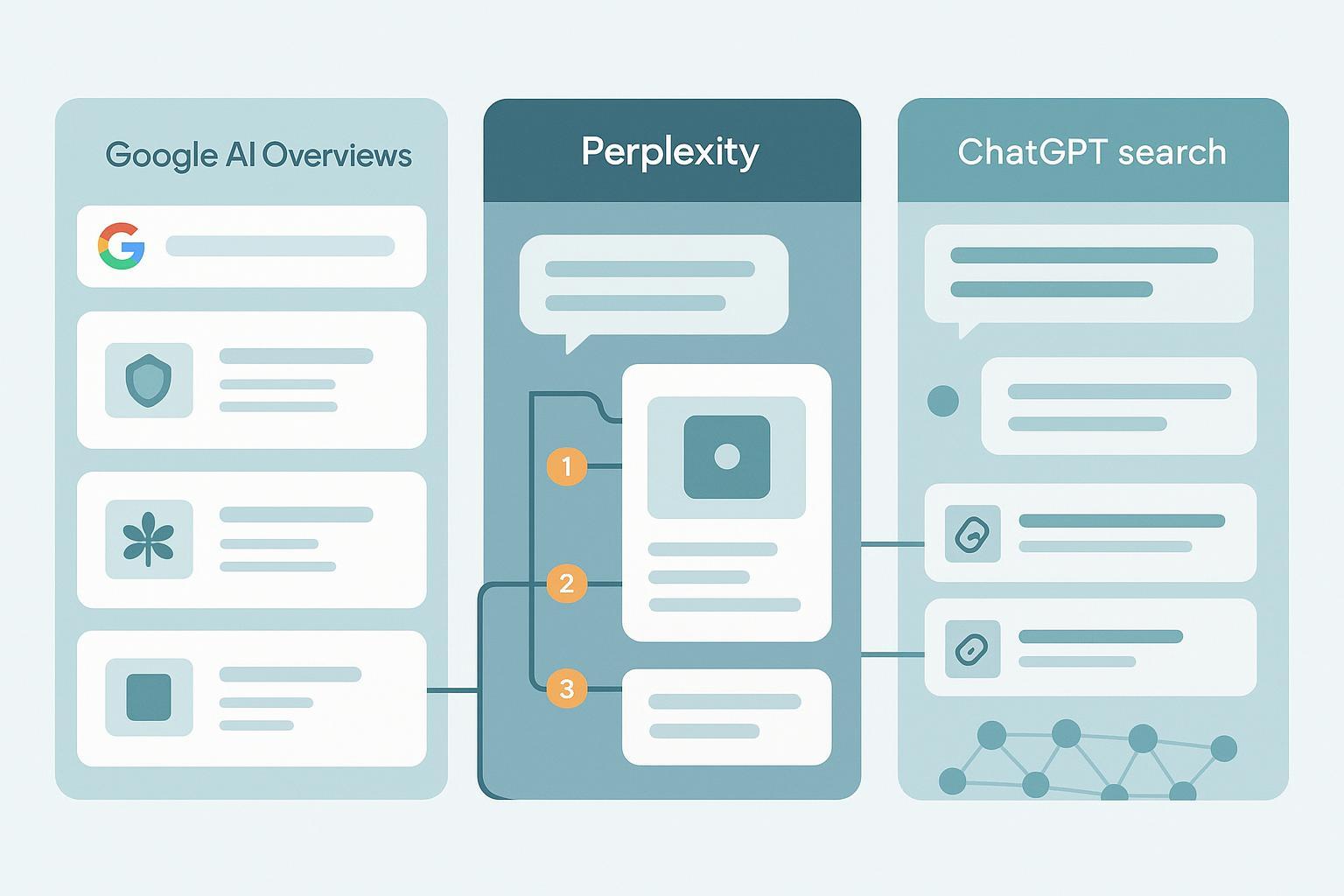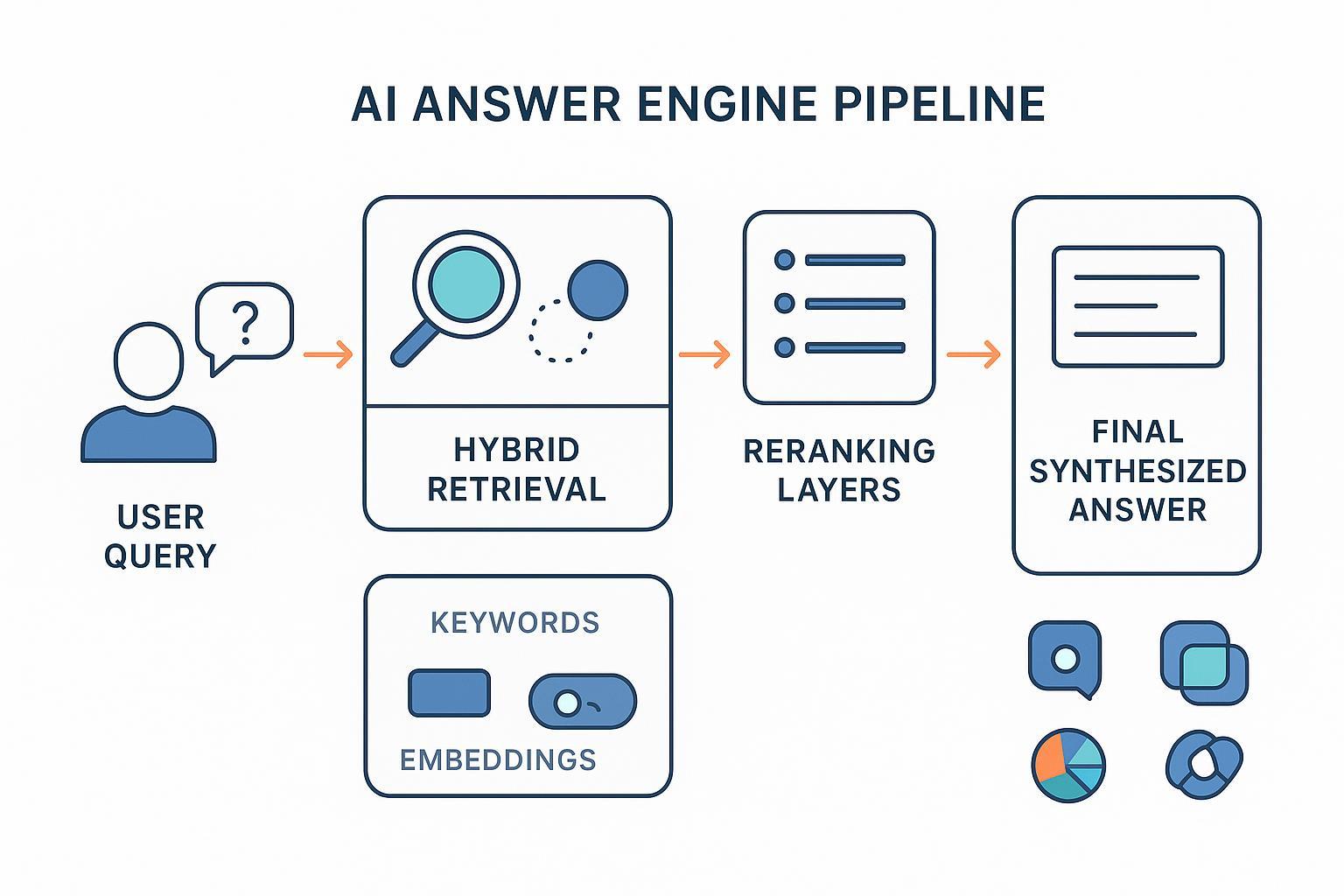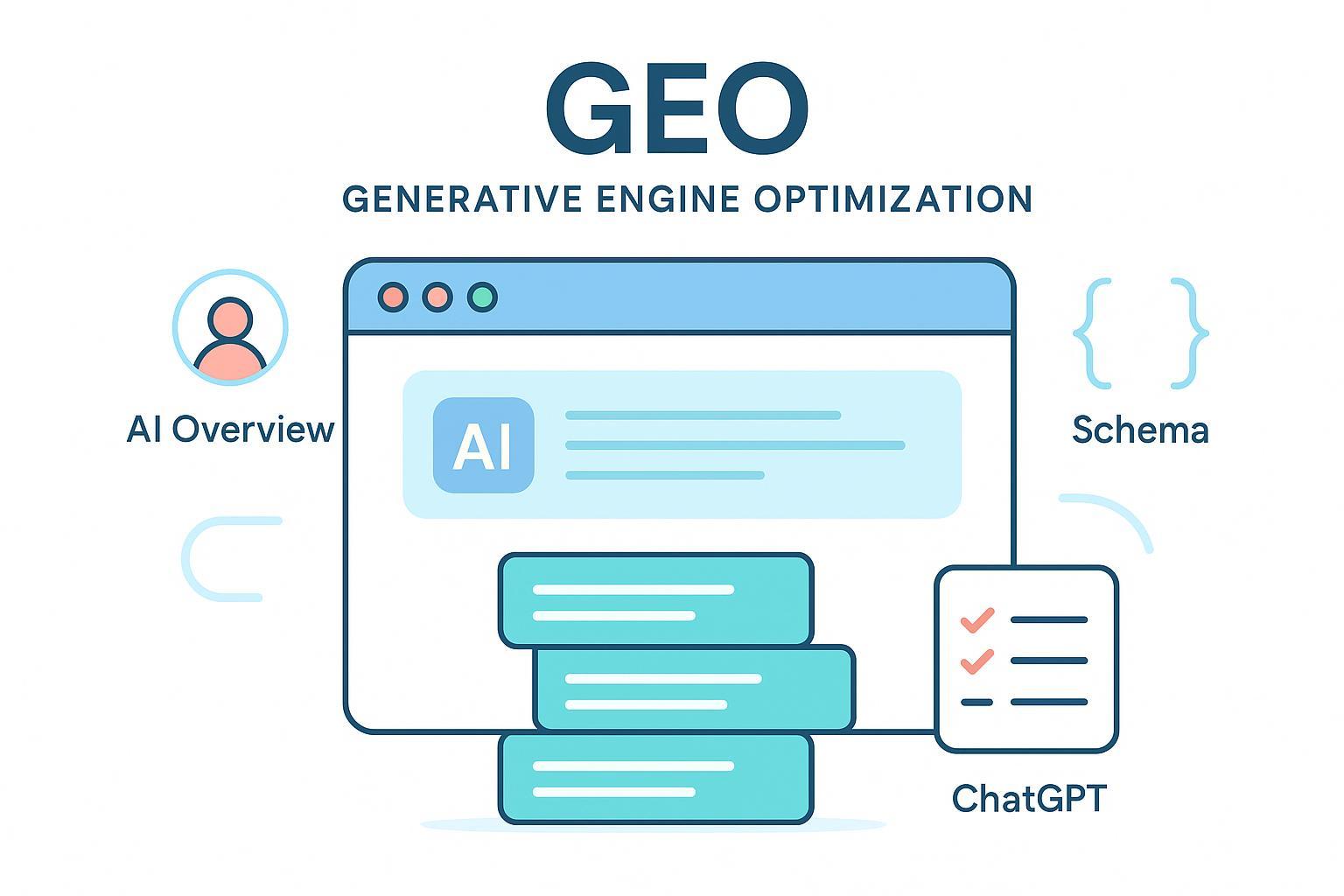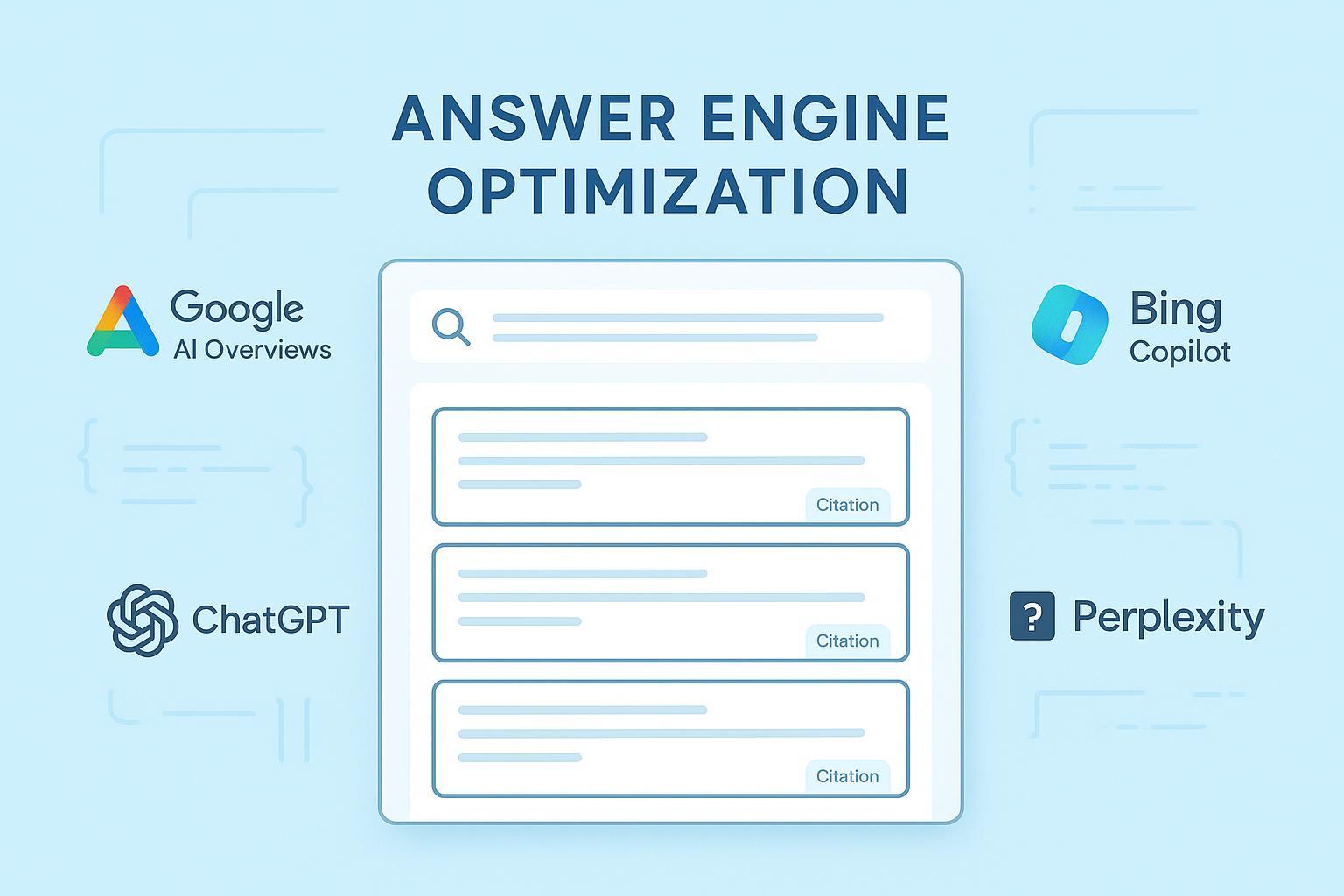Best Practices: Boosting Generative AI Content Performance with Real Examples & Interactivity
Discover actionable best practices for professionals to improve generative AI content performance using real-world examples and interactive elements. Enhance engagement, trust, and measurable results.

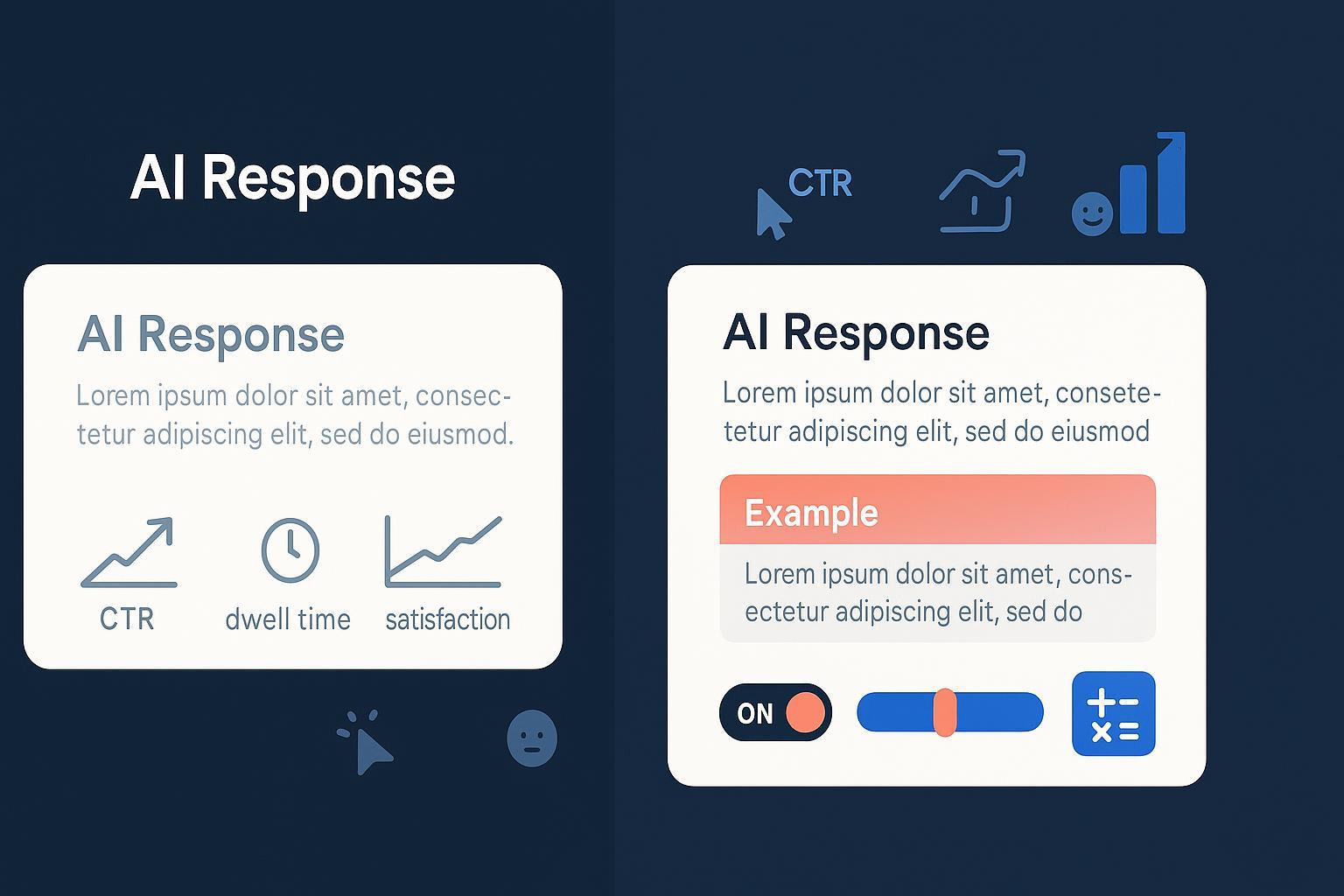
Generative AI can produce fluent answers—but too often they read like generalized advice. In multiple campaigns, we saw engagement plateau until we introduced domain-relevant examples and lightweight interactivity. Once we embedded concrete scenarios and simple actions (a quiz, an estimator, a chaptered video), dwell time and qualified clicks lifted. This article distills how to do it, why it works, and how to measure the impact without adding noise.
Why examples and interactivity work
- Real-world context improves comprehension and trust. Recent HCI work indicates that domain-relevant narratives can increase perceived readability and believability of AI-generated content; in a 2025 experimental study, stakeholder stories produced by LLMs were rated highly readable and believable, while also noting citation accuracy concerns. See the Human-AI Narrative Synthesis paper (2025) via arXiv study on narrative synthesis.
- Interactive formats tend to generate more engagement than passive content. A 2025 synthesis referencing Demand Metric and CMI reports states that marketers overwhelmingly find interactive content more attention-grabbing, with roughly 2x engagement compared to static formats; use this as directional evidence while validating locally. See Amra & Elma’s 2025 interactive content statistics summary.
- Webinar interactivity raises on-demand engagement. Practical features like polls, Q&A, chapters, and embedded CTAs drive re-engagement in on-demand contexts, according to ON24’s 2025 guidance; the specifics vary by audience and format. See ON24 guidance on effective on-demand webinar strategy (2025).
- Virtual try-ons and concrete demonstrations aid conversion. MIT Sloan (2024) reports instances where virtual try-ons have tripled conversion in retail implementations, illustrating the power of example-rich, hands-on experiences. See MIT Sloan discussion of virtual try-on conversion effects (2024).
Summary: Examples clarify intent; interactivity creates micro-commitments. Together, they reduce cognitive friction and increase meaningful actions. The rest of this guide is about building them into AI answers efficiently and ethically.
Foundational practices to get right
-
Select examples your audience recognizes
- Tie examples to the user’s job-to-be-done and industry. If the query is “optimize SaaS onboarding,” show a named, verifiable scenario (e.g., anonymized B2B onboarding funnel with real steps and numbers).
- Localize details (currency, regulations, seasonal dynamics) to the audience’s context.
- Attribute sources inside the answer with concise anchors and years to build trust.
-
Design lightweight interactivity first
- Start with low-friction elements: a 3–5 question quiz, a single-step estimator, a one-click poll, or a chaptered video segment. These are quick to build and easy to measure.
- Map the interactive element to a decision: quizzes qualify, calculators estimate ROI, polls surface preferences, and chapters let users skip to relevance.
- Keep cognition manageable: avoid long forms and heavy branching until the basics show lift.
-
- Disclose data use and model limitations. Make it clear what’s algorithmic, what’s editorial, and where the data comes from.
- Follow WCAG 2.1: sufficient contrast, keyboard navigation, alt text, captions/transcripts for videos, and clear focus states.
- Offer fallbacks: if an interactive tool fails, provide a static equivalent or downloadable checklist.
Implementation playbooks
Playbook A: AI answer + annotated real-world example (B2B SaaS)
Goal: Turn a generic “how to reduce churn” response into a high-trust, example-anchored guide.
Steps:
- Identify the most common audience segment (e.g., mid-market SaaS with self-serve onboarding) and extract a representative funnel: sign-up → activation → first value event → repeat use → subscription renewal.
- Prompt pattern for the LLM:
- Provide domain context and constraints (ARR range, freemium model, activation definition).
- Ask for one annotated example with numbers (baseline activation 42%, target 55%; cohort retention 30/60/90-day).
- Require inline citations and a validation checklist.
- Add a micro-interaction: a one-click toggle to switch the example between “freemium” and “trial,” updating the numbers dynamically.
- Validate with a human-in-the-loop:
- Check the math, the plausibility of assumptions, and the source anchors.
- Run a quick cohort analysis in your analytics tool to align the example with real data.
- Publish, then measure: interaction rate on the toggle, time on page, clicks to deeper resources, and qualified demo requests.
Trade-off: Over-detailed examples can intimidate beginners. Provide a simplified and a detailed view, and let users choose.
Playbook B: Lightweight quiz or poll for qualification
Goal: Increase relevance and micro-commitment without adding form fatigue.
Steps:
- Choose a 3–5 question quiz that outputs a clear segment label (e.g., “early-stage content ops,” “scale-stage optimization”).
- Use conditional logic sparingly: 1–2 branches based on the first answer to keep it quick.
- Personalize the result card: recommend one next step (guide, template, case study) and a conversion-neutral CTA (download the checklist).
- Tools and evidence:
- Interactive quizzes have reported conversion rates in the 30–40% range in some campaigns. See Outgrow’s conversion rate guidance (updated 2025) and Outgrow on quiz-led lead generation (2025).
- Measurement: completion rate, time to completion, post-quiz CTR, and downstream assisted conversions.
Pitfall: Asking for contact info too early can suppress completion. Offer value first; request email optionally after the results.
Playbook C: Interactive video or webinar snippets
Goal: Turn long-form video into skimmable, actionable segments.
Steps:
- Chapter your video by concrete scenarios (e.g., “Example: onboarding emails,” “Example: in-app nudge”).
- Add polls or Q&A moments at key decision points to capture preferences.
- Embed contextual CTAs that match the chapter (template, calculator, workflow).
- Repurpose the snippets into AI answers: for each chapter, generate an answer card with a summary, the example, and one poll or CTA.
- Reference guidance from ON24 on on-demand engagement features. See ON24’s on-demand webinar strategy advice (2025).
Trade-off: Overusing interactive prompts can fragment focus. Keep a steady cadence—roughly one interactive element per 2–3 minutes.
Playbook D: AR try-on or visualizer (retail/beauty)
Goal: Convert abstract recommendations into experiential proof.
Steps:
- Start with a high-intent product category (e.g., lipstick shades) and integrate a virtual try-on component.
- Provide clear instructions and accessibility: alt text, keyboard controls, and a static color palette as fallback.
- Include a brief example: “Shade X on medium skin under indoor lighting,” and allow quick comparisons.
- Tie to conversion: show stock, delivery estimates, and user reviews near the try-on.
- Context: L’Oréal’s ModiFace tools demonstrate the feasibility of such experiences. See L’Oréal’s digital tools overview. For impact framing, MIT Sloan notes cases of tripled conversion in virtual try-on contexts (2024) — see reference above.
Trade-off: AR can be heavy on lower-end devices. Offer a lightweight visualizer and defer full AR to devices that meet performance criteria.
Measurement and iteration: what to track and how
Define an event schema before launch:
- Impressions, interactions (quiz starts/completions, poll votes, calculator inputs), video chapter plays, toggles, and CTA clicks.
- Behavioral metrics: dwell time, scroll depth, stickiness/return rate, and content-assisted conversions.
- Cohorts by segment: responses from the quiz/poll, device type, traffic source, and content topic.
Analyze with product analytics:
- Use platforms like Amplitude or Mixpanel to track micro-interactions and cohorts. Amplitude’s experimentation tooling and lifecycle charts can help quantify repeat engagement and journey paths; Forrester recognized Amplitude in 2024 for feature management and experimentation, underscoring robust methodology. See Amplitude’s Forrester Wave recognition (Q3 2024).
Monitor AI search visibility:
- To understand how your examples and interactive answers surface across answer engines (ChatGPT, Perplexity, Google AI Overview), consider a neutral tracking tool like Geneo for cross-platform brand mentions, sentiment, and visibility. Disclosure: Geneo is our product.
- For conceptual grounding on answer engine optimization, see Geneo’s explainer on Generative Engine Optimization (GEO) and browse the Geneo blog for practical monitoring insights.
Experiment continuously:
- Run A/B tests on example density (one vs. two examples), quiz length (3 vs. 5 questions), and CTA placement.
- Track assisted conversions (first-touch vs. post-interaction) to capture value beyond last-click.
- Combine quantitative analytics with qualitative signals (comments, sentiment) to refine prompts and example selection.
Micro-cases and lessons
- Farfetch email uplift (widely reported): Multiple 2025 marketing analyses summarize results of AI-optimized email language for Farfetch, citing lifts such as +7% opens and up to +38% clicks depending on campaign type. See Pragmatic Digital’s case study roundup (2025) and DataFeedWatch’s AI advertising examples (2025). Use these figures as directional; validate expectations with your own tests.
- Unilever operations and content production: Unilever publicly reports factory program outcomes including 27% productivity improvements and 41% waste reduction, and its CMO noted AI cutting product shoot costs by about 50% in specific contexts. See Unilever newsroom (2025) and Adweek coverage of creative production efficiencies (2025).
- Virtual try-on adoption: Retailers deploying try-on tools observe improved conversion in certain implementations; as a conceptual anchor, see the MIT Sloan discussion on tripled conversion in some virtual try-on cases (2024). Avoid unverified cumulative usage claims.
Failure example: Interactivity overload
- What happened: A knowledge article embedded a long quiz (12 questions), three calculators, and continuous polls. Users bounced before finishing the first module.
- Fix: Reduce to one 3–5 question quiz tied to a clear outcome, a single estimator, and one optional poll. Dwell time recovered, and completion rates tripled compared to the overloaded variant.
Advanced techniques
- Adaptive quizzes with LLMs: Use an LLM to adjust difficulty based on early responses, but cap branches to maintain speed. Keep a static fallback path.
- Branching dialogues with multi-agent orchestration: Frameworks like LangGraph can structure complex conversations and tool calls; pilot on a narrow task before scaling.
- Personalization loops from analytics: Feed cohort insights (e.g., segment preference for calculators vs. polls) back into prompt design and UI layout.
- Governance and ethics: Document prompt sources, maintain audit trails, and disclose personalization logic. Follow accessibility and privacy standards throughout.
Operational checklists
Launch checklist:
- Define intent, audience segment, and example scope.
- Map interactivity to a decision (quiz, calculator, poll, chapter).
- Draft prompts with context, constraints, and required citations.
- QA math, sources, accessibility, and performance.
- Instrument events and set up experiments.
Iteration checklist:
- Review engagement by segment weekly (completion, CTR, dwell).
- Rotate examples quarterly to avoid staleness; archive outcomes.
- Test one change at a time; capture uplift and run duration.
- Update disclosures and accessibility artifacts whenever components change.
- Maintain a source registry with years and publishers.
- Log prompt versions and rationale.
- Perform fairness and bias checks for personalized logic.
- Provide user controls to opt out of data capture where applicable.
Closing
Real-world examples turn abstract advice into credible, actionable guidance. Interactivity creates micro-commitments that move users forward. Start with lightweight formats, measure diligently, and iterate. When done well, your generative AI responses will earn engagement not by being longer, but by being more useful, trustworthy, and participatory.


